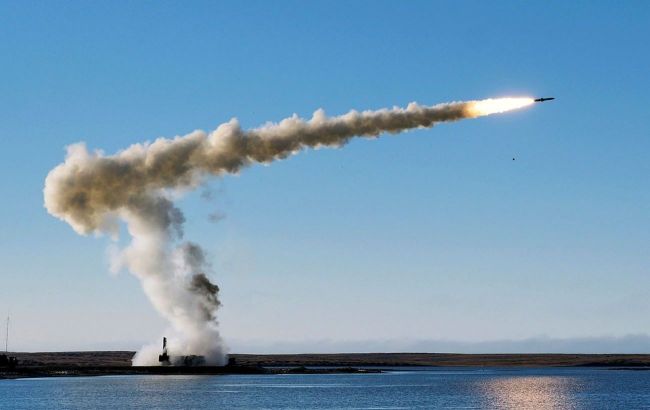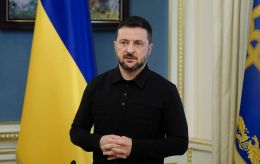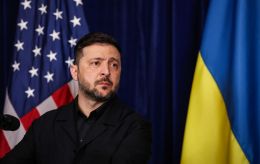Zircon turns out to be big bluff: What's wrong with Russia's 'unparalleled' missile
 Photo: Russians hit Kyiv with a Zircon missile again this week (Russian media)
Photo: Russians hit Kyiv with a Zircon missile again this week (Russian media)
This week, the Russian aggressor again hit Kyiv with Zircon missiles and Ukrainian air defense managed to shoot them down. However, this time it was found that some characteristics of the newest weapon are far from the declared ones.
Valerii Romanenko, an expert on aviation and missile weapons, told RBC-Ukraine about what the Zircon is.
Why it takes time to identify Zircon
No one knows what this missile looks like as an object. There were no photos. It can be identified by its flight speed, but the official confirmation is the markings on its elements.
After the fall, the missile breaks into a large number of pieces. First, they need to be collected. Second, we don't have many experts who can identify the Zircon. Only the Kyiv Scientific Research Institute of Forensic Expertise has them. They identified it almost as soon as they received the parts. It doesn't take long, it's enough to see the markings 3M22 or 3...22 with any letter in the middle. And you can immediately determine that it is Zircon because there are already samples of parts, individual components. As a rule, these are elements of the engine or tail section.
Russian bluff. What analysis of warhead showed
The weight of the Zircon warhead was claimed to be 300 kg. This was the basis of the experts' calculations. The missile is hypersonic, so it requires more fuel than, for example, a Kh-101 flying at 700 km/h. And where to find the space for fuel in a missile that should be in a standard container? We had to reduce the warhead and add fuel.
And when it turned out that the entire warhead weighed only 140-150 kg, of which 40 kg was explosives, the whole view of this missile and its purpose changed. This ratio (when the weight of the explosive is only a quarter) means that Zircon is not meant to destroy ground targets, but to destroy ships or protected objects, just like Storm Shadow and Taurus.
However, it turns out that this is all a big bluff. The shell of the warhead is huge, similar in design to Storm Shadow and Taurus. The shell is steel, very strong with a minimum of explosives. It must pierce concrete or armor, and the explosion must occur inside, so a minimum amount of explosives is enough to maximize damage. We saw, for example, how one Storm Shadow destroyed a landing ship or submarine on the slipways in Sevastopol.
And here is another issue. Zircon is also suitable for destroying protected underground facilities. It falls on the target at an angle of about 30 degrees, which significantly reduces the penetration. We can say that this missile, in addition to problems with control and accuracy, has problems with hitting. A big Russian bluff.
Why Zircon is confused with Onyx
In Russian sources, the hypersonic Zircon is called the product of the development of the Soviet anti-ship missile Onyx. In principle, this may be true; it is a new generation. But constructively, they have nothing in common. The Zircon has a different configuration and layout: the first part is a solid-fuel upper stage, and the second part is the actual missile with a direct-flow engine. Oniks has a conventional turbojet engine.
Probably, both missiles are launched from the territory of Crimea with Bastion missile systems. Nothing is surprising here, there are standard launch containers. Earlier, the Russians claimed to have adopted a four-axle self-propelled vehicle with two such launch containers.
Ukrainian forces can only shoot down Zircon and Onyx with Patriot and SAMP-T anti-ballistic missiles, but they are not enough to cover the whole of Ukraine. An effective way would be to destroy the Bastions in Crimea, but it is very difficult to do so.
For example, to hit them with a Storm Shadow missile, you need to locate the target on the ground, hang the missile under a Su-24, lift it into the air, fly it to the launch site, and so on. Not to mention the fact that you need to enter the coordinates and flight route into Storm Shadow. All this can take up to half a day. Bastion takes up positions, shoots, and leaves them in a maximum of 10-15 minutes.
So we simply have nothing to hit the Bastions with. If we had ballistic missiles like Grom, which we were developing, we could talk about it. So far, there are no such weapons.
Why do they use Zircon to hit protected Kyiv?
Kyiv is covered by Patriot systems, which is why the Russians are launching Zircon. They want to find out if the Patriot can reach them, so to speak, they are testing it. In general, they want to have a trump weapon that cannot be repelled. For example, to strike a demonstration strike before any negotiations. If the Zircon had penetrated Ukrainian air defense, they might have struck more massively. As long as these missiles are shot down, they have nothing to criticize.
They will continue to test them. They will try some other way, using other trajectories, and tactics, under the cover of cruise missiles or ballistics. But I want to assure you that there will be no massive launches of Zircon because the Russians do not have them in such numbers. They have a dozen of them, no more.

